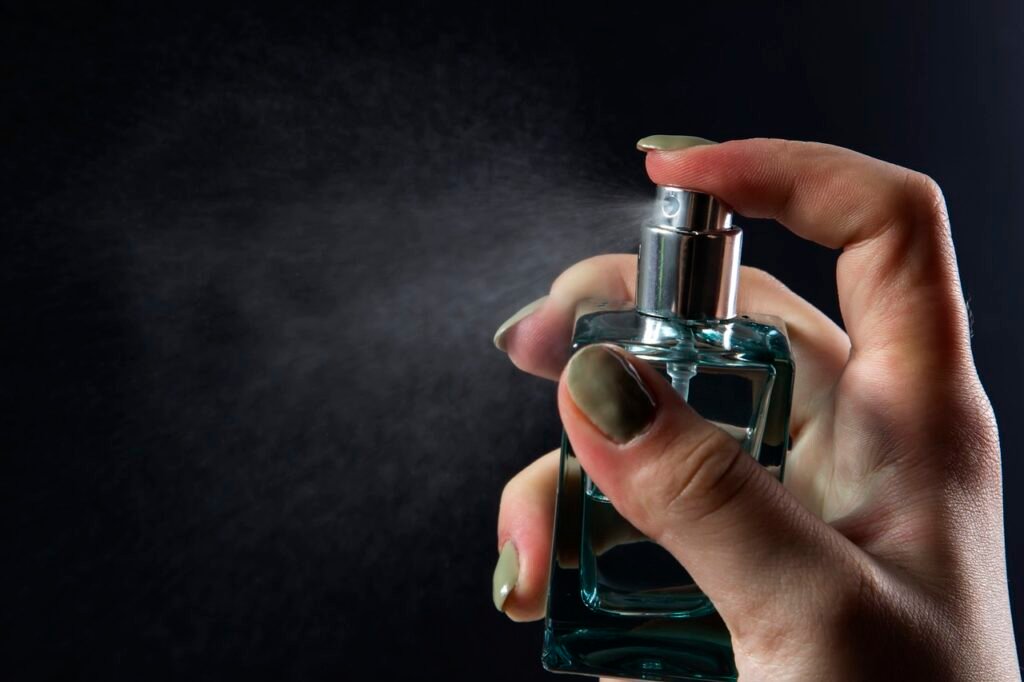Perfumes are not just fragrances but creations which are artistic, chemical, olfactory creations. Every fragrance is a sophisticated creation which embodies feelings, recollections, and statements about personality. Using a perfume, the morning before going to work, during an outing or before going out at night changes moods, boosts confidence, and have unique smells that sets people apart. In this blog, the reader will learn about the main aspects of perfumery, about the processes that make them so attractive, about the types of fragrances, and about the historical and individual aspects that make perfumes one of the most popular accessories in the world.
- What is Perfume?
Perfume is a delicate blend of volatile aromatic substances in the form of oil, ethereal oils, solvents and fixatives that leaves a nice smell on the smell. On the one hand perfumes are objects of elegance and self-identity, on the other they represent the tradition of millions of artisans’ works. Growth is seen by many as a tremendous artistic achievement; after years of training, perfumers or “noses”, adjust notes and ingredients to more closely match that of the wearer and their current disposition.
Originally, perfume is a mixture of those three categories of components known as the head note, the heart note, and the base note that gradually dissipate making the fragrance show various facets. Every single perfume introduced is designed to have its narrative: from the refreshing and bright scent of citrus to comfort spice and warmth as well as sophistication.
- The Science of Making Perfumes:
It takes science and creativity to come up with a good perfume in the market. All the fragrances are really the concentration of various natural and synthetic materials that help to achieve the scent type. The chemistry behind perfumes relies on three major components:
- Essential Oils: Made from plants and flowers, they give the perfume its base or main note, which is, also, known as the tone of the fragrance. These include lavender, rose, jasmine as well as sandalwood samples of aromatic natural oils. Such oils as those derived from plants and tree nuts are produced through a method called steam distillation, cold pressing, or solvent extraction.
- Aroma Compounds: They often include synthetic chemicals that have been designed to replicate certain natural chemicals that give out some smells or come up with new products, which cannot be naturally derived. Through this innovation, other perfume industries have been able to widen the repertoire of smells which have been on offer.
- Solvents and Fixatives: Dust, usually alcohol, helps to extend the ability of the user to apply the fragrance by dispersing in the air over time. There are households, which are used to stabilize the composition and to make the perfume stay longer on the skin.
The science of perfumery is not only a blend of components, but also much more. Perfumers know how chemically the molecules behave to blend and come up with good compositions.
3: Types of Perfumes:
Fragrances come in different strength levels of focus in terms of both the strength of the smell and duration. Here’s a breakdown of the main categories:
- Parfum (Perfume): Comprising 20-30% of oils, parfum is the longest lasting type that can last from 8 to 12 hours. It is normally richer in the nutrients, more opulent and more costly by virtue of its higher proportion of oil.
- Eau de Parfum (EDP): Eau de Parfum has concentration of 15-20% of fragrance oils and spreads a heavy smell for approximately 6-8 hours. Due to its durability, it is worn mostly during the day and at night.
- Eau de Toilette (EDT): There is also a lighter level of concentration (5-15%) and normally lasts between 4 to 6 hours and is correct for daily wear or non-intensive use.
- Eau de Cologne (EDC): Normally containing 2-4 % oil, cologne is light in scent and therefore tends to last for only 2-4 hours at most. This category is often named as citrus or herbal and is usually used in warm climates.
- Eau Fraîche: Even lighter than cologne, Eau Fraîche has a concentration of 1-3% oil and generally remains effective for only a couple of hours. It is comparatively tame and discreet, and is more used in application for spritzer or mists.
Both serve different purposes in terms of fragrance experience that people prefer at different times and places.
4: Exploring Scent Categories:
Perfumery divides into scent families that have distinct accords providing customers an optimal range of aromatic smells. The major families are:
- Floral: Floral scents that include rose, jasmine, and lilies, ought to be appreciated at this time. This family is very universal and can be both cool and light and warm and sexual.
- Oriental: There is also the oriental with luxurious, hot and spicy aroma which includes scents including vanilla, amber, musk and spice.
- Woody: There is the woody family that you get to see more of, with earthy notes like sandalwood, cedar, and vetiver and are found in the unisex or the masculine family.
- Fresh: The fresh family from Hugo Boss comes with citrus, green and aquatic types of fragrances ideal for daily wear or any season with a vibrant sunlight.
These categories assist perfumers in defining arrangements of compositions as well as assisting consumers in identifying possibly appealing smells in terms of their preferences.
5: In the Psychology and the Culture of Scent:
Essences are clothed with culture, emotion and psychology more than mere smell. This type of communication has a rich relation with memory and elicits responses which may be strong and retrospective or reflexive. To many people perfumes signify identity, a medium to communicate mood, style and belief system.
Psychological Impact: Odors control emotions and actions; for example, lavender has a relaxing aroma, while orange – has a stimulating one. Smelling good is therapeutic to many and ongoing; emerging from their homes, many rely on these perfumes to build their confidence.
Cultural Significance: Perfumes have an interesting history as objects that reflected the person’s social standing and his high level of civilization. Today they are used as a lifestyle, some people prefer to wear natural or organic products to cater with their convictions.
Personal Identity: The principle idea of a fragrance is to be able to convey the personality of the wearer in a discrete yet unique means. People choose their fragrances according to their character, with some tend to choose strong oriental-spicy fragrance and others will choose gentle floral notes.
6: The Science of Scent Perception:
This is because the olfactory nerve is situated close to the limbic system, brain areas which are in charge of the emotion and memory. The feeling of refuge occurs when we inhale a fragrance, specific scent molecules are transported through the nose where they bind to the receptors. These receptors then release signals to the brain creating feelings that prompt memories, mood, or reactance.
That’s why some smells make one feel calm or spirited; they evoke a person’s personal experiences.That is why some smells are calming or stimulating; they look for personal impressions. Perception of a given smell also differs from one person to another depending on factors like body chemistry, cultural accumulation and genetic code that determines the ability to interpret the familiar smells.
7: Contemporary Technology in Fragrance Creation
Currently perfumery incorporates the ancient methods of preparation and the contemporary technologies. Another advantage of working with synthetic compounds is that, for example, people can create fragrances for compositions that contain components that can no longer be obtained due to the lack of the plants necessary for their production or due to other reasons. There are also socio -cultural innovations that are sustainability-based; companies are paying more attention to where they source their materials, the kind of packaging they use and whether the products they produce are tested on animals.
Further, there is a trend towards individual approach à la Perfumery. Some brands operate service delivery where customers can select and specify the kinds of scents they want, thus giving them fragrances that reflect their personalized wishes.
Conclusion:
Even Perfume is not just a smell, rather it is a mixture of science, art and feelings which let people talk about themselves, recall something and even make a statement. Eau de colognes can be created from exotic eau de nature or exotic chemical synthesis and people always remain fascinated by fragrances. As for every other kind of art, perfumery is dynamic and with its universal appeal of constant attempts to embody the elusive nature of beauty.

